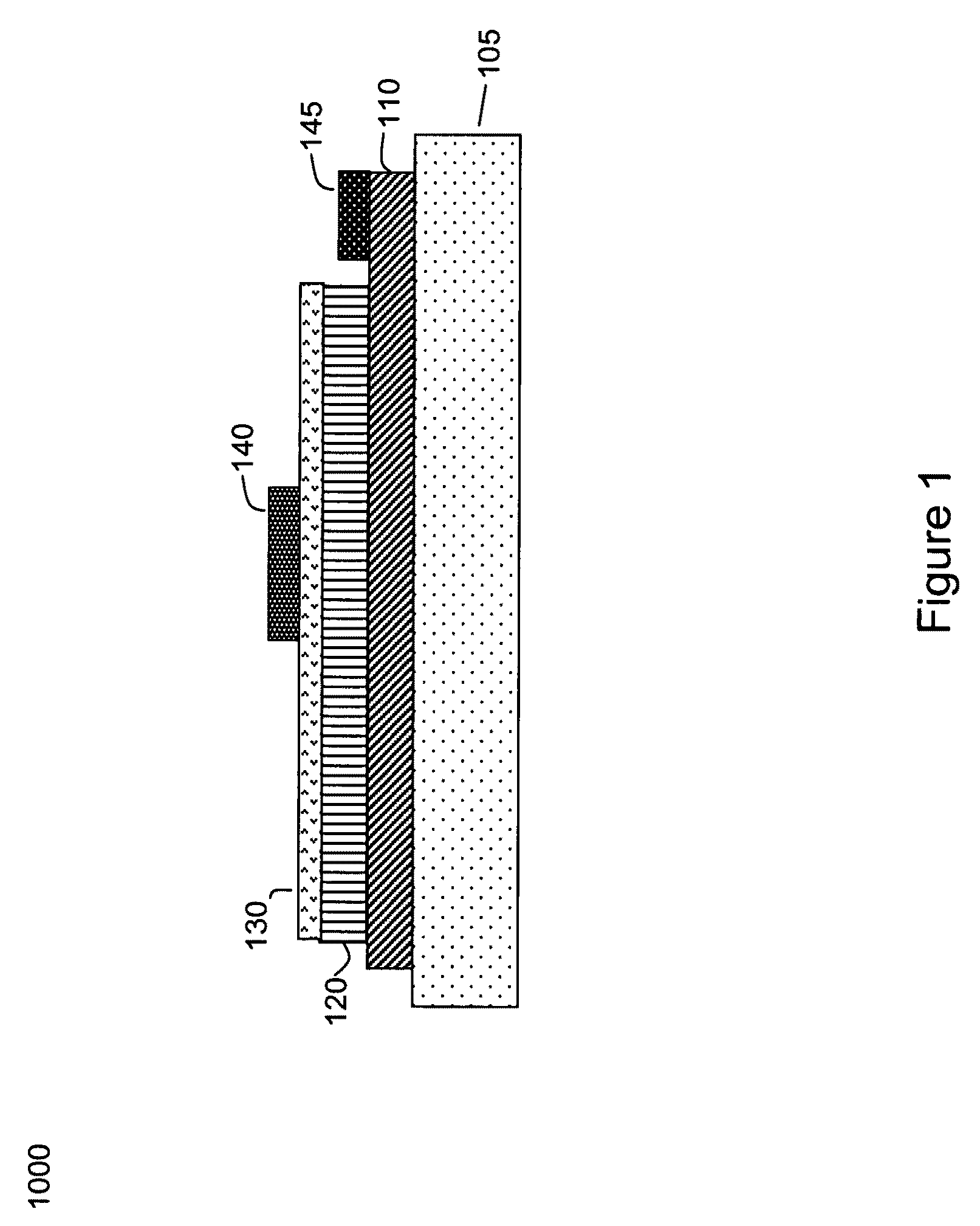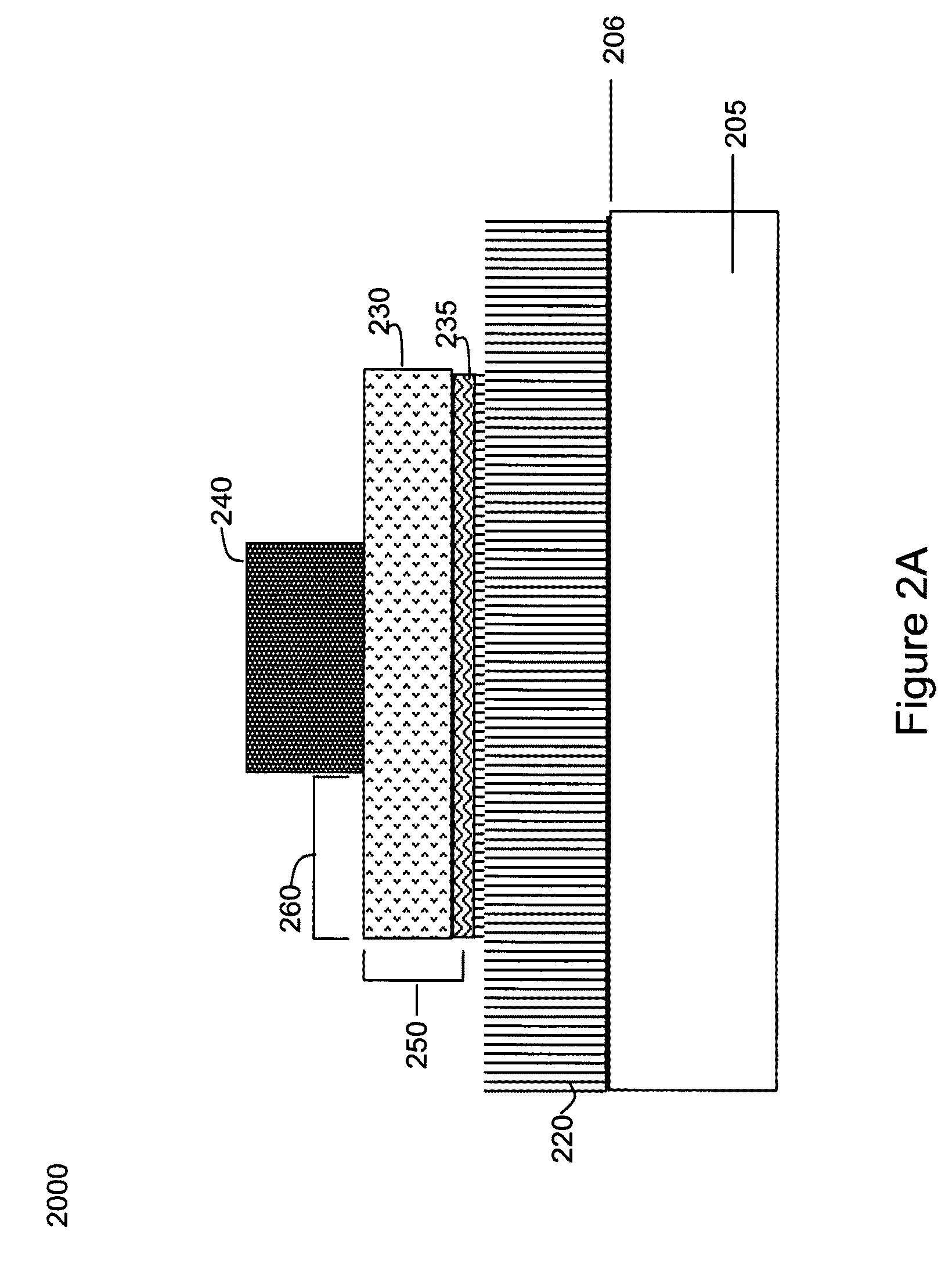Method of forming a carbon nanotube-based contact to semiconductor
a technology of carbon nanotubes and contacts, applied in the direction of layered products, transportation and packaging, chemical instruments and processes, etc., can solve the problems of p-gan substrate p-gans with very low conductivity, current injection problems, etc., to achieve low contact resistance interfaces and high optical transmittance of carbon nanotube fabrics
- Summary
- Abstract
- Description
- Claims
- Application Information
AI Technical Summary
Benefits of technology
Problems solved by technology
Method used
Image
Examples
example 1
[0083]This device was made using GaN wafers obtained from CREE, Inc., consisting of a p-GaN / n-GaN heterojunction on a SiC substrate and a protective oxide layer. The backside of the wafer was coated with Shipley 1805 photoresist to protect the backside of the wafer during the stripping of the oxide. The wafer was then immersed in a buffered oxide etch to strip the oxide exposing a clean p-GaN surface.
[0084]CNTs were then spun onto the wafer repeatedly until the resistance as measured by a 4-point-probe was about 100Ω. The wafer was then annealed in vacuum at 300° C. for 30 minutes in order to promote adhesion of the CNT fabric and remove residual solvent.
[0085]A metal bi-layer film of 4 nm of Ti and 150 nm of Al were then deposited on top of the CNT fabric by electron beam evaporation. In this case, the CNTs and the 4 nm of Ti comprise the interface layer 350 mentioned in FIG. 3, while the 150 nm of Al comprise the contact pad layer 340.
[0086]Shipley 1805 positive photoresist was th...
example 2
[0094]The following is an example of a process sequence used to form CNT contacts to p-GaN with aluminum contacting the CNT pad. This particular embodiment of the invention should be considered illustrative and not restrictive.
[0095]The substrates used in the experiment described in this example were films p-GaN on sapphire (alumina) substrates which had gold contacts on the bottom side of the wafer and came with a protective sputtered SiO2 layer on the p-GaN layer to protect the film from corrosion, oxidation and damage. The samples were obtained from CREE Inc.
[0096]The following process steps were employed:
(a) Strip pGaN sputtered SiO2 with ammoniumfluoride: A solution called Timetech® (ammonium fluoride) was used at room temperature to dissolve the 200 nm thick protective film of sputtered SiO2.
(b) Deposit CNTs (spray): With the wafer held at 120 C on a hotplate, an aqueous solution of carbon nanotubes was sprayed onto the substrate until the CNT transparency reached about 90% an...
PUM
| Property | Measurement | Unit |
|---|---|---|
| mechanical strength | aaaaa | aaaaa |
| diameters | aaaaa | aaaaa |
| sheet resistance | aaaaa | aaaaa |
Abstract
Description
Claims
Application Information
 Login to View More
Login to View More - R&D
- Intellectual Property
- Life Sciences
- Materials
- Tech Scout
- Unparalleled Data Quality
- Higher Quality Content
- 60% Fewer Hallucinations
Browse by: Latest US Patents, China's latest patents, Technical Efficacy Thesaurus, Application Domain, Technology Topic, Popular Technical Reports.
© 2025 PatSnap. All rights reserved.Legal|Privacy policy|Modern Slavery Act Transparency Statement|Sitemap|About US| Contact US: help@patsnap.com



